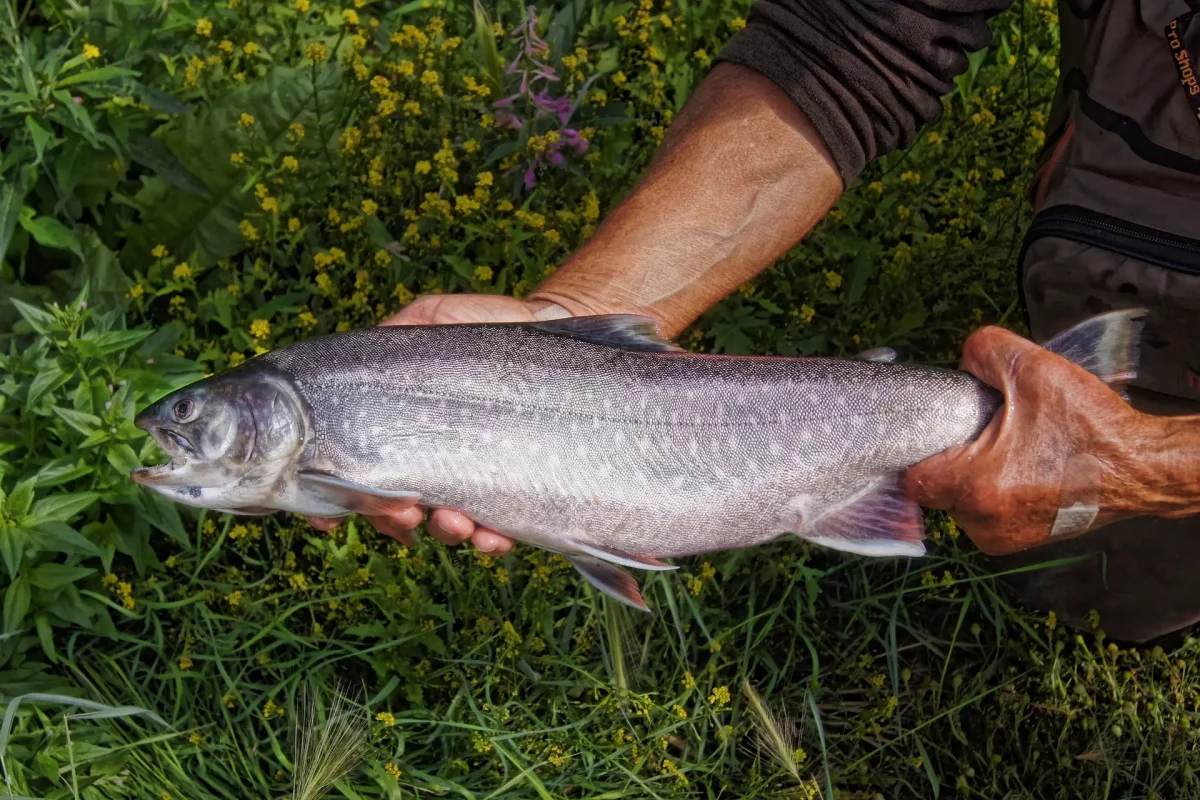
Loup de mer, called sea bass in German, is a delicacy whether steamed in the tube with olive oil and white wine or cooked discreetly in foil.
The turbot is considered a particularly noble fish: melancholic in expression, but grilled and served with a sauce Béar- naise, it gives the gourmet a private culinary world event. And even the salmon, now bred like a chicken of the sea, can still delight – for example, as “Saumon soufflé”, the legendary classic by Paul Haeberlin in the Alsatian three-star restaurant “L’Auberge de l’Ill”. Nevertheless, only the trout has been immortalized in chamber music, namely by Franz Schubert in the “Quintet in A major” for piano, violin, viola, violincello and double bass, also called the “Trout Quintet”. The lively song (“In einem Bächlein helle…”) pays tribute to a fish that comes in two qualities: farmed and wild. What is fattened by the millions in ponds and so-called breeding farms is of no particular importance in terms of fine taste. Farmed trout usually taste staid, lacking the delicate yet savory flavor of their wild sisters. Their gout can be described in words as inadequately as, say, an adagio by Schubert, but both can be felt. The latter on a mild summer evening, when the fireflies fly their nuptial dances, the real brown trout, of course, while eating.
Naturally, the black-greenish and red spotted brown trout is much more highly regarded by connoisseurs than the rainbow trout imported from North America in 1872, which can be recognized by its blunt-snouted head with hooked lower jaw and reddish stripe running along its flanks. What today in the
The main species of trout offered for sale in the trade and in restaurants is the rainbow trout, which is often mistakenly called brown trout. It does not taste bad, but never as delicious as the brown trout, also called “little dancer”, which thrives only in cool, absolutely clean-flowing waters. It is temperamental, shy and stubborn, which anglers misunderstand as capricious, especially after unsuccessful hunting. The best season for brown trout begins in the spring and extends into July; during this time its meat has the finest aroma.
The kitchen treatment of such an original brown trout is a matter of mood.
Trout are versatile to prepare. The ideal weight is 300 to 400 grams. In the miller’s style, it is first drawn through milk – lightly salted and peppered – then dredged in flour, fried in hot butter until golden brown, drizzled with lemon juice, sprinkled with chopped parsley and served with brown butter or remoulade sauce. Delicately smoked trout is a delicacy, and apart tastes the trout à la vinaigrette: cooked blue and pickled in a herb sauce.
The trout puree on red butter sauce announces sophistication: season the fillets with salt, pepper and a touch of nutmeg, put them in the blender and puree for about two minutes. Add the whites of one egg (per trout) and 150 ml of heavy cream by the spoonful, also a tablespoon of freshly chopped tarragon. Now pour the pureed mixture into four buttered molds and cook in a water bath at 190 degrees in a preheated oven. In the meantime, for the sauce, boil down 200 ml red wine (Pinot Noir, Blaufränkisch, Zweigelt), 100 ml Noilly Prat and 10 g chopped shallots, stir in 60 g ice-cold butter flakes at a time, season with salt and pepper. Pour the sauce onto hot plates and turn the trout puree onto them.
It goes without saying that the flesh of rainbow trout is also suitable for such recipes, which slightly to significantly alienate the inherent flavor of the fish. The situation is quite different with the great classic, namely the “Trout blue”. For this purist preparation, only the brown trout comes into question. To do this, prepare a broth of water, white wine, vinegar, salt, peppercorns, onions, carrots, parsley roots, celery and a bay leaf, which should simmer gently for about half an hour before bubbling up and sliding in the trout, which has been gutted and carefully cleaned, but not washed, so as not to lose the precious mucus of the skin that causes the appetizing blue. Immediately remove the heat and let the trout steep in this court broth for about five to six minutes. If the skin cracks, this is a sign of freshly caught fish.
The nobility of trout blue lies in the art of omission. The taste of the fish is most pure in this preparation, because nothing distorts the natural flavor. Corresp-
The master or mistress of the kitchen will proceed with restraint when arranging the food. Melted butter and small potatoes, possibly a hollandaise sauce as an alternative will be the most delicious accompaniment.
As for the beverage, only wine comes into question: powerful growths at the Forelle Müllerin (Grüner Veltliner, Sauvignonn blanc, Weißburgunder, also a dry red Burgundy or Blaufränkisch go excellently with fried fish). The roasting process during frying gives the trout a stronger flavor – and if almonds are also fried, a stately Riesling or Pinot Gris (type Spätlese) will be just as appropriate as a finely structured red wine, which, however, should not have been aged in new wood (keyword: barrique) or only very cautiously. But for the supreme discipline, the trout blue, nothing beats an elegant Riesling. This results in a meal where the soul stretches comfortably and you feel that everything around you is affirmation.
(FINK Magazine, August F. Winkler)
 ist zertifizierter
ist zertifizierter  BIO-Händler und stolzes
BIO-Händler und stolzes  Slow Food-Mitglied — Tante Emma wäre stolz auf uns!
Slow Food-Mitglied — Tante Emma wäre stolz auf uns!
